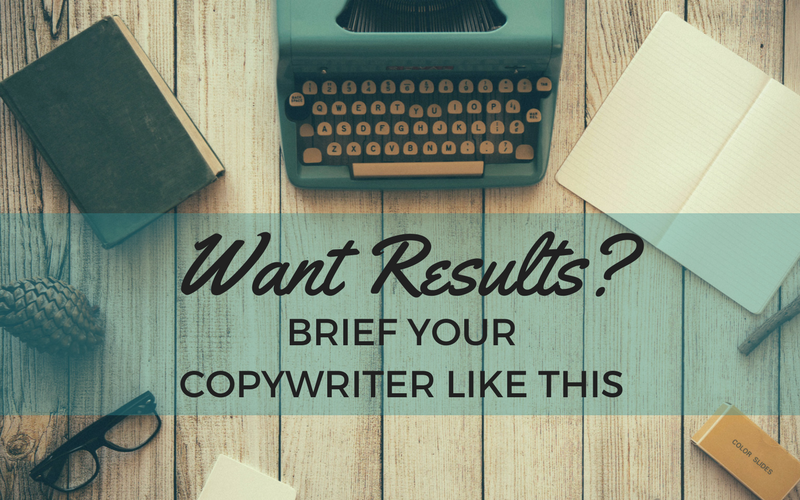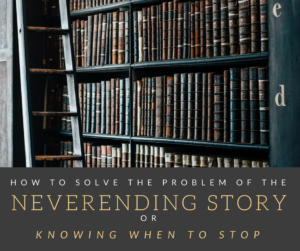It is a truth universally acknowledged that a good brief gets good work. The time and effort you put into creating a brief are directly correlated to the satisfaction you’ll receive from the finished piece.
But how do you create a “good” brief? What does good look like? Let’s take a look at something seemingly unrelated… a trip to the hairdresser.
Client: I want it a bit shorter, with texture, but no layers. A bit of oomph, but sleek at the same time”.
Hairdresser: So how about an inch and a half off the ends, and a body wave to give you some texture.
Client: No, no chemical treatments, and although it needs to be shorter, I don’t want to lose the length
You leave the salon an hour later with something that looks very similar to what you went in with, just with a better blow dry. You grumble that the hairdresser didn’t do what you wanted, and say you’re never going back.
But if you’d been clearer, the results would have been different. You could have taken in a photo of a similar hairstyle. Researched what it was you wanted and given the hairdresser a more concrete idea of your definition of the words “oomph” and “sleek”.
Briefing in a copywriting or design project is not that different. Good creatives will seek to clarify for you, make sure they understand what you actually want. Client satisfaction is after all the key to success. But to get the work you want, you need to brief well. You need to brief like a boss.
How should I brief my copywriter?
There is no agreed and official way to brief. Some agencies and freelancers may have a briefing form for you to work with, but these can be restrictive and prevent clients sharing the information they need to share. It’s better to work through your brief thoroughly and well in advance. Here are some helpful pointers:
Project Scope: What do you want? Copy for a new website or just one or two pages? An entirely new blog post or something repurposed from existing content. Let your copywriter know how much you want them to write. Either in terms of wordcount or number of pages.
Objectives: What do you want this work to do for you and your business? Why are you investing time and money in this activity?
Audience: Who do you want to read this piece of work? Same people as now or a new audience?
Messages: What do you want people to do because of this piece of work? Think hard about this before deciding what you want to tell your audience. Any copywriter worth his or her printer ink will make sure your finished article is client-focused, but they may need your help in getting there. What do you want to tell your audience and what do they want to know?
Tone: Are you an approachable confidante? Or a professional authority with a formal tone? Give your copywriter as much as you can here. If you have examples you like, then share them – you’ll be more likely to strike gold first time round. If you’re not certain take a look around and let your copywriter have a few examples of a tone you’d like to replicate.
Essentials: what are the things you absolutely want to see in the finished article? And what do you definitely not want to see? List set phrases or spellings, keywords and legal requirements. Your copywriter will only know what you want or don’t want if you tell them.
Deadlines: give a realistic deadline and let your copywriter know the stages of approval. Are you the only person to please, or are there 3 other people who will want to take a look? And for the purposes of your budget try to give as much time as possible. Short or antisocial deadlines tend to command a premium rate.
Background information: how much do you have? Give it all to your copywriter. Send them background links, presentations and samples to experience. Writing about something you have little knowledge about can be tough; you’ll get client brownie points if you flood your copywriter with information. There is genuinely no such thing as too much background information.
Briefing gets easier with practice
After working with a copywriter for a while, you’ll develop a relationship where the briefing process becomes much easier and faster. But it will always be worth working through the above points to make sure you don’t miss anything out. It may take time, but time spent writing a solid brief is time well spent. You owe it to yourself and your business.
How to balance copy vs visuals on your websiteMirror mirror on the wall. Who’s got the most beautiful website of them all?
Sorry evil stepmother; beauty isn’t the be-all and end-all of online success. Yep, good looks help. And in this Insta-obsessed world, we’d be foolish to think the appearance of our websites doesn’t matter.
But when it’s never been so easy to forge an online presence and add a few flattering filters to make things look better, it’s good to remind ourselves that beauty is only skin (or pixel) deep.
Focus only on your website’s appearance at your peril; you’ll miss opportunities to engage with your audience and search engines. It’s important to create a good balance between copy vs visuals. We all like a good-looking website, but we also like to understand what a company offers and to be able to easily find the information we’re looking for. Spend time on good website design; you’ll help your site visitors no end. But you need to more to make your website pretty and intelligent.
Copy vs Visuals… how to get the perfect balance
How can you add substance and depth to your website? Make it more meaningful than a lookbook of beautiful images and colours on screen. Read on for three stunningly simple ways to add some brawn to your beauty.
- Text is King. And I’m not just saying that because I’m a copywriter; it really is king. Search engines index based on text, so if you want your website to be seen you need to get to grips with writing for your website. And it doesn’t matter if images are your raison d’être. Well-chosen, well-described images will work hard for you if you put in the time. Complete the alt text sections, captions and descriptions, and use language relevant to your audience.
- Keep it balanced. As if to contradict myself, too much text is a killer. We’ve all seen websites jam-packed with information. It’s impossible to get the detail you need, so you leave and hop-off onto another [better] website. In some ways writing less text is tougher than writing lots. And it definitely takes more effort. Work out what’s most relevant for your readers and include only those points. If you struggle, get a helping hand. A copywriter is perfectly placed to help you with a job like this.
- Check the basics. So now your beautifully curated images are detailed with alt text information and descriptions, and you’ve perfected the amount of text. Now let’s check your spelling and grammar. Finding a beautiful website that makes sense to you but has fundamental spelling and grammar issues is a bit like meeting your dream man… and finding he talks with his mouth full and spits food on you when speaking. Ewwww, stick around? I don’t think so. Don’t make your site visitors question your abilities with typos and grammar gremlins. My favourite approach is to print out my finished text, leave it until the next day and then read it backwards. Distance and a slight sense of disconnection from what you’ve written will help you identify anything that doesn’t look quite right.
Working through these 3 simple steps will help make your website more meaningful and appealing to potential clients. Keep at the good looks – an ugly website with lots of good content is no good to anyone – but don’t neglect the written content either.
Concise writing, or, solving the problem of the NeverEnding StoryNot Just for Kids from the Eighties
Back in 1984, a film called The NeverEnding Story was released. Based loosely on a book of the same name, it was notable for a furry white dragon that looked like a dog and a song which seems to have consisted only of the words “Ooooh, NeverEnding Storyyyyyyyy”. My sisters, brother and I loved this film and all that it represented. I haven’t seen it for years, afraid that exposure to modern special effects will destroy my nostalgia for this piece of 80’s low-brow culture.

Want to write more concisely?
Struggling to write concisely is a genuine problem. However, if you look at content development advice, you’d think it wasn’t an issue. There are so many tips and posts about avoiding writer’s block and developing content ideas. Entire businesses devote themselves to the cause. But although it can be tough to get started with your writing, finishing it can be even tougher.
But fear not. Simple solutions exist, and cheerfully they’re easier than hopping on the back of a dubious-looking dragon (sorry, that’s one for the Never Ending Story fans…).
It’s simply a matter of good planning. Remember, writing for your audience is no more than writing a very simple story. You need a beginning, a middle and an end. One of the simplest ways to write this simple story is simply to:
- Tell your audience what you’re going to say (the beginning)
- Tell them what they want to know / need to know (the middle)
- Remind them of the salient points / tell them the conclusion (the end)
And wouldn’t you know, it’s the middle bit where the problems happen. Where extra ideas arrive and explanations exceed their allotted allowance. Where the story you’re telling starts to move towards the dreaded “NeverEnding Story” territory.
Help yourself to some prompts to keep out of this no-man’s land of tumbleweed and literary durchfall (it’s German; so much more expressive than the English equivalent, and easier to spell).
Five Perfect Prompts to Keep Your Storytelling on Track.
1. Make a Plan.

There’s no plan like a good plan
I know, if I’ve said it once, I’ve said it a thousand times. But a plan (even a very basic plan) is essential if you want your words to work for you. Think carefully about what you want your readers to do once they’ve finished reading. How do you want them to feel? What do you want them to believe? Make a plan, or even a simple checklist. Whatever works for you.
2. Stay on Course.
Great! You have your plan. But just as you wouldn’t set off on a journey without referring to your map or satnav again, make sure you regularly refer to your plan to be sure you’re staying on track and not veering off into an unplanned direction. This is essential if you want to write concisely.
3. Less is More.
It can be so difficult to keep your writing focused on just one or two concepts and metaphors. Trust me, I know; the more you write, the more ideas you have, and it seems like a waste of brainpower to not use those great ideas, even if they weren’t in your plan. My advice? Include those extra ideas in your first draft. Then edit them out by cutting and pasting into a different file (your “Genius Metaphors” or “Brilliant New Ideas” files).
Result? Your writing stays on track and you have a bundle of ideas to use on those days when inspiration is scarce.
4. Edit Yourself Out.
Remember, you’re writing for your reader. Not yourself. It can be too easy to write as if you’re making a personal diary. If your writing is too ambling, take stock and question how much of it is truly useful and interesting to your reader. Be brutal with yourself and delete anything that’s irrelevant and/or uninteresting. And if it’s interesting (and I mean, genuinely interesting) but not relevant, find a way to make it relevant to your reader.
5. It’s not Poetry.
To write concisely you need to keep things simple. Unless you’re specifically tasked with creating a sensorial or artistic approach (fashion and fragrance for instance), limit your use of adverbs and adjectives, and keep your metaphors simple. For copy that’s simpler to understand and less open to misinterpretation, focus your writing on the communication of an idea, rather than the expression of an emotion.
The End
And there we have it. With a neat and tidy middle part of your story, all that remains is to remind your reader of the salient points. Which in this case is to make a plan and stick to it. And if it’s proving too much, then call in the professionals. Give a copywriter (me for instance) a shout to help you lick that writing into shape. Without a furry dragon in sight.
Get in touch today and I’ll help you with your website writing woes and brochure planning blues.
